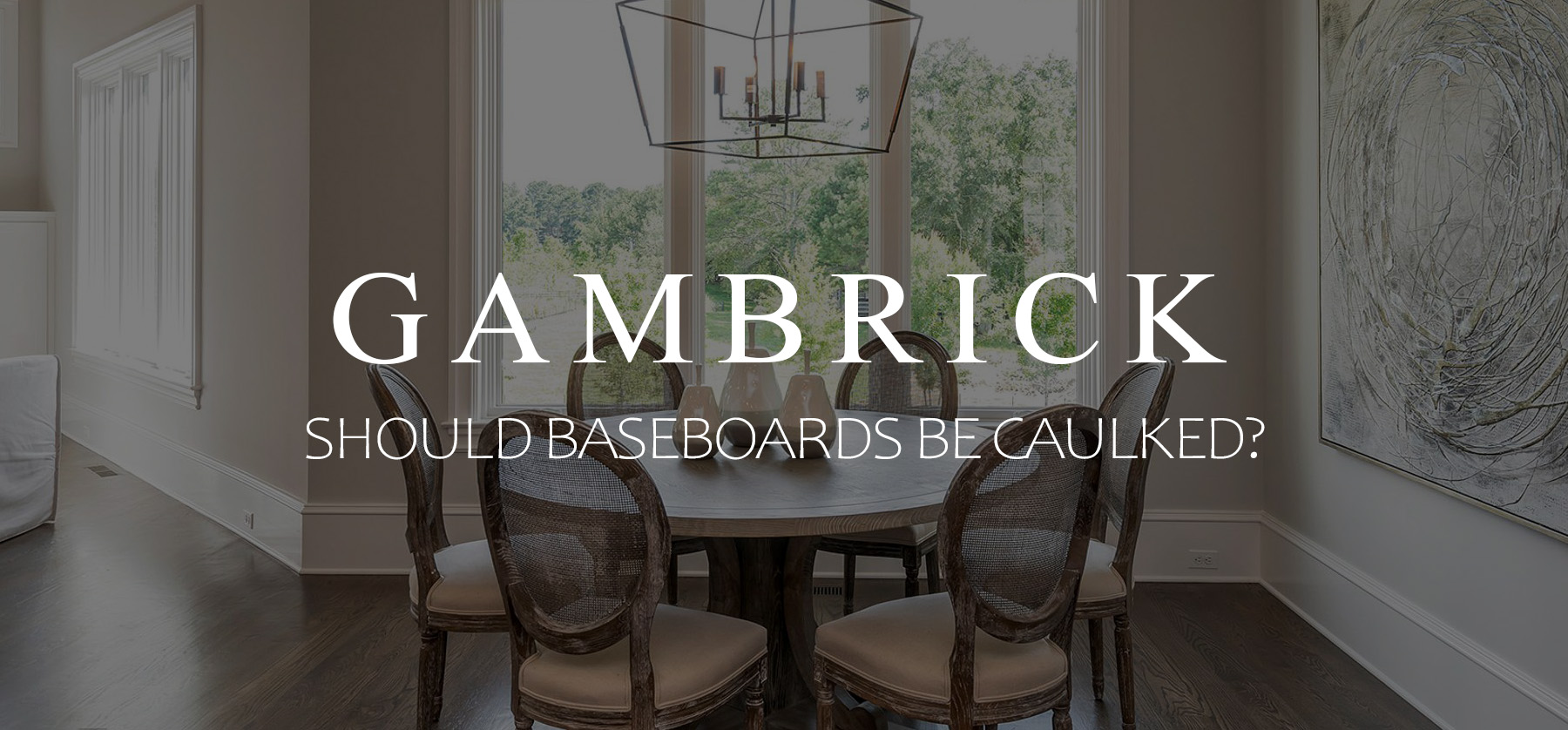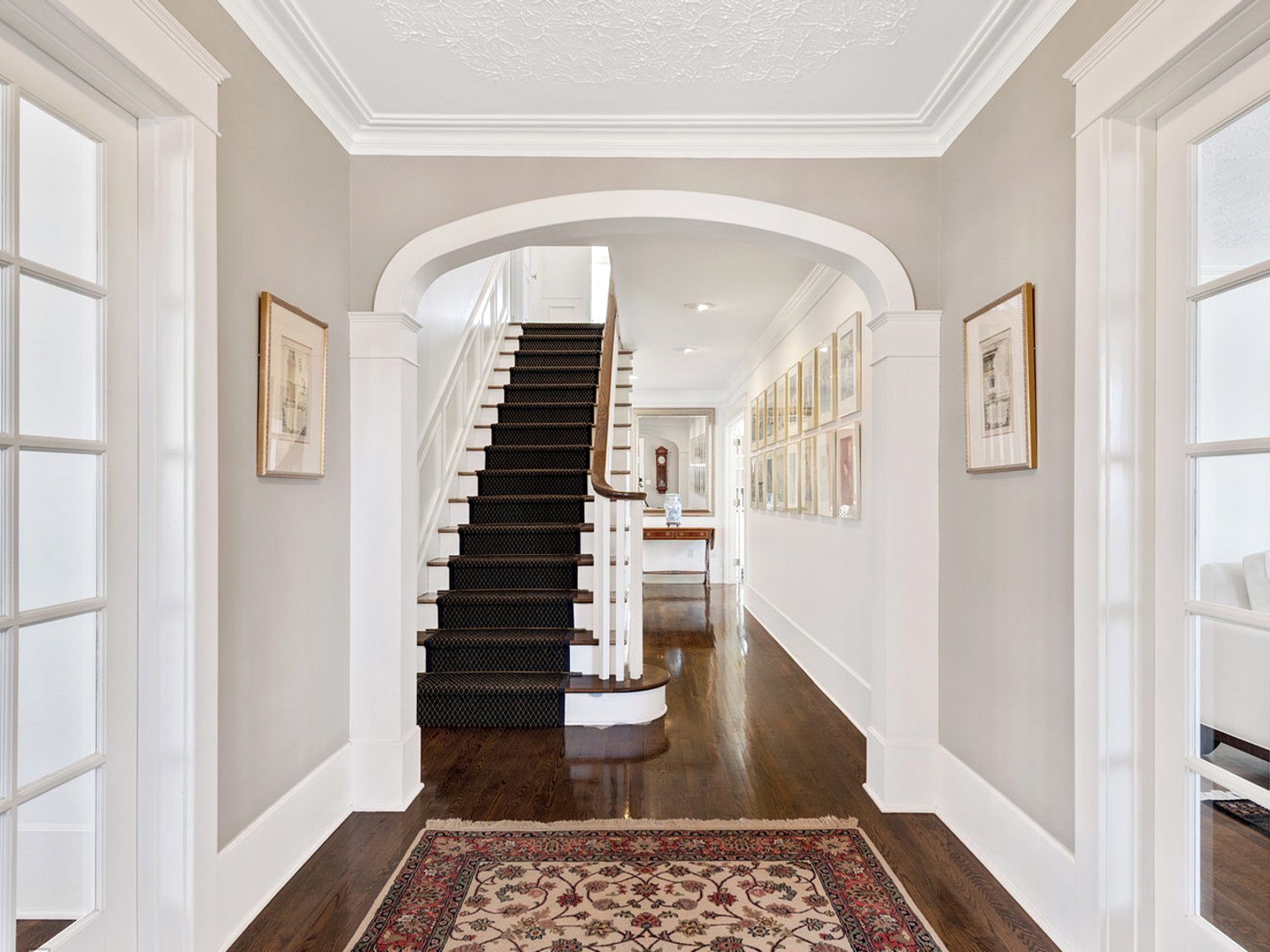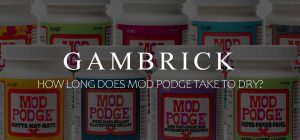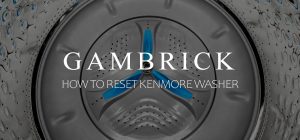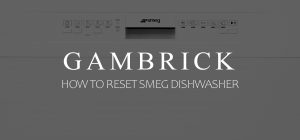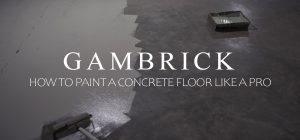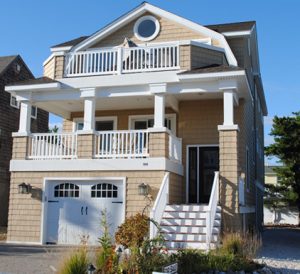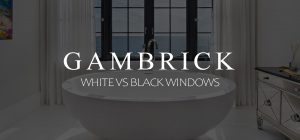Should Baseboards Be Caulked?
Baseboards give your home a classy, high-end look by creating a transition from wall to floor. But they need to be installed and finished properly. A home’s baseboards should be caulked for a few reasons. The first is aesthetics. Caulk seals the edges of the trim and creates a tight transition between surfaces. This is especially helpful when you install baseboards on a wall that’s not perfectly flat. The second reason is bugs. A tight seal makes it harder for bugs to live under and behind the baseboards. The third reason is water. Caulking the bottom of your baseboards can keep small amounts of water from penetrating under and into the wood. And finally the last benefit to caulking your baseboards is energy efficiency. Many older baseboards can be drafty. But you can keep that cool air out of the house with caulk.
Caulk can slowly degrade over time. It’s a flexible material that contains moisture. But as it dries out caulk shrinks which creates small gaps. Flexibility is very important because caulk will move with the baseboard as it expands and contracts. Depending on the conditions inside your home, you may need to eventually re-caulk your baseboards.
After the baseboards are caulked it’s usually best to apply a thin coat of paint. This helps seal and protect the caulk which makes it last longer.
Caulk provides the finishing touch a baseboard needs by filling tiny gaps and cracks. It helps create a smooth surface and improves the lifespan of your baseboards, floors and walls. If you’ll be painting the baseboards it’s almost always beneficial to caulk them first.
Why You Should Caulk Baseboards
Caulking baseboards involves applying caulk along the top and bottom edges of the baseboards and at the joints. This helps prevent damage, keeps out insects and drafts, and creates a more polished look.
Caulk is applied with a caulk gun. It’s generally sold in 10 oz. tubes you can buy at any Home Depot or Lowes.
When your floor gets wet during cleaning or from a spill, liquid can seep under the baseboards. This area is hard to dry so mold and rot can occur. The damage can then creep up into the wall and other trim pieces.
Dirt can build up in the gaps at the bottom edge of a baseboard and the joints. This eventually leaves a room looking dirty. Especially if you have white baseboards. Caulk at the bottom of the baseboards and seams prevents this from happening.
Gaps and cracks in your baseboards gives insects a way into your home. Caulk on both the top and bottom edge of the baseboards as well as the corners closes the gaps which keeps bugs out. This can be more effective, cheaper and safer than using insecticide sprays and powders inside the house.
Looks is another good reason to caulk the baseboards. Trim is a huge part of a homes interior design. Beautiful baseboards provide a base for the wall and a transition to the floor. Caulk smooths the transition between the trim, walls and floors which provides a more polished, high-end finish. This is especially true if your baseboards are painted.
There are lots of reasons why you should caulk your baseboards in an both an old or new house. But here are the main 4:
1. Caulked Baseboards Look Better
Caulk seals tight spaces and gaps between the baseboard, wall and floor. This creates a smoother transition between surfaces and erases blemishes.This is especially helpful in a home where the floors and/or walls are not perfectly flat.
The ideal baseboard installation is flat against the wall and floor with tight joints. And it’s not always possible to do that even in a new home. Caulk is a filler that can create the illusion of a perfect install.
Caulk is also great at covering up nail holes or small dings in the trim. I use it along with other fillers like putty to make my baseboards look super smooth.
2. Caulk Protects Against Water Damage
Water can seep into the tiny gap between the floor and baseboards. This can happen not only from spills but also when you mop the floors. Baseboards are usually made of wood and so is the sub-floor. Water in these tight areas has a hard time drying because there’s inadequate air flow.
If water gets under the baseboards it can potentially cause rot and/or mold.
In a home that’s not temperature controlled water can also freeze. This creates pressure that can lift a baseboard and create gaps.
Caulk at the bottom of a baseboard seals the gap between the floor and trim so water can’t penetrate under the baseboard.
3. Caulk Keeps Out Insects
Gaps and cracks in your baseboards allows insects like ants, beetles, bed-bugs and spiders a way to enter the home. They live behind the walls and under floor boards. By sealing all the tiny gaps and cracks you can help keep pests out.
Caulking the baseboards is especially helpful on exterior wall. This is where insects are most likely to enter the house.
Kitchen baseboards are another spot you should seal. Many insects, like ants, are attracted to food and come looking every season.
4. Caulk Seals Drafts
Caulking your baseboards and other trim can help keep out drafts. This is a bigger problem with older homes that were differently than modern houses. Many old homes had walls covered with plaster instead of drywall. This design provided spaces where air could flow and enter the home through the trim. Caulk is a great way to seal all the little gaps and keep cold air out.
Where To Apply Baseboard Caulk
There are a few different places you should consider applying a thin bead of caulk to your baseboards. However keep in mind this is done when you paint the trim. If you’re staining the trim you usually don’t use caulk because it can’t be stained.
Pro Tip: If you’re staining your baseboards make some custom wood filler using wood glue and sawdust from the baseboard. By using sawdust from the actual baseboard you’re staining, the stain color will match. Fill is all the same areas including the top and bottom edges and the joints. Then sand them smooth prior to staining.
Along The Top Edge Of The Baseboard
Apply a very thin bead of caulk to the top of the baseboard where it meets the wall. If there’s a gap between the wall and baseboard you want to fill it with caulk. But you don’t want too much caulk or you’ll lose the baseboards edge. This can make trim look messy.
Applying caulk to the top edge of your baseboards is mostly cosmetic. But it also helps keep water from getting behind the trim. This can be helpful if you have kids or pets in the house. Or in areas that may get wet like a kitchen, mudroom, laundry or bathroom.
Along The Bottom Edge Of The Baseboard
Apply a thin bead of caulk on the bottom edge of the baseboard where the trim meets the floor. Fill in any gaps between the bottom of the trim and the floor. Make sure not to use too much caulk or it’ll look messy. You don;t want caulk to get on the floor. Rather, it’s pushed into the space between the floor and the trim.
Caulking the bottom edge of your baseboards prevents water from seeping under the trim. This help prevent water damage, rot and mold growth. But it can help with aesthetics too. Large gaps between the floor and baseboard look funny because you can’t paint them. Caulking fixes the problem and makes the transition from floor the trim seamless.
Apply Caulk To The Joints Of Your Baseboards
Apply a thin bead of caulk to all the joints and corners. If you perfectly installed the trim you won’t have gaps in these areas at install. However they can open a little as the wood, and house, expands and contracts. A perfect install is rare so caulk provides a little bit of protection just in case.
Caulking the joints also helps seal them against water and bugs. Water can enter the baseboards from the top, bottom or face of the trim. So you want to seal all those potential penetrations.
Gaps at the joints and corners looks bad and unprofessional so sealing them before you paint is a must.
The Type Of Caulk To Use On Baseboards
Baseboards are caulked in different areas that require a different type of caulk.
- Top Edge: A paintable, waterproof latex caulk is great for sealing the top edge of your baseboards. An acrylic and silicone blend also works just as well.
- Bottom Edge: A clear silicone caulk is best at sealing out moisture and bugs. However it can’t be painted. Use it for small cracks and something paintable for larger gaps.
- Joints: Use the same caulk in the joints and corners as you used on the top edge.
Use a caulk with a low shrinkage rate of between five and 10 percent. This helps it last longer.
There are a variety of different caulks on the market made by different manufacturers. Some are a lot better than others. I recommend using a good quality caulk because it will generally last longer. The cheap stuff looks fine when its new but will need re-application much faster.
Each type of caulk has a different formulation with varying strengths and weaknesses. Depending on how it’s made it will be better at some jobs but not as good at others. For example, some caulk can be painted but it’s not as good at sealing out water as silicone. However silicone can’t be painted. So you use silicone in wet areas and paintable caulk in dry spots that you paint.
Latex Caulk
Latex caulk dries fast and expands to fill cracks better. It’s ideal for use indoors because it has a low odor and is easy to clean with water. It’s commonly known as painter’s caulk because it’s paintable.
Latex caulk and water don’t mix. When exposed to water it quickly thins out and dissipates. This makes it easy to clean up but hard to use in damp areas. However once dry it’s waterproof.
When latex caulk dries you can completely conceal it with paint.This is a huge advantage when caulking baseboards because if you apply it correctly you can’t even tell it’s there.
However latex caulk isn’t that durable and tends to wear out faster when exposed to varying temperatures and weather. This is why we don’t use it outdoors. It also dries and shrinks quickly which leaves gaps. But painting fixes this problem. You should paint latex caulk immediately after it dries.
Latex caulk comes in a variety of colors. But the most popular is white.
Acrylic Latex Caulk
Acrylic latex caulk is more durable than latex alone. By adding acrylic to the mixture it gets tougher, gains flexibility and lasts longer. However it becomes harder to work with. I use it on baseboards in areas that see a lot of use like a mudroom, laundry or bathroom.
Silicone Caulk
Silicone caulk is the best sealant. It’s tough, can withstand extreme temperatures, has great flexibility and is waterproof. But it’s hard to work with and can’t be painted.
100% silicone caulk or caulks that contain some amount of silicone are very durable. The more silicone in the caulk the more durable it is. But it also gets increasingly hard to work with. This is because silicone is sticky like a glue. And because it’s waterproof cleaning up and wiping down excess is hard to do.
Another down side of using silicone on a baseboard is that it’s not paintable. So if you have painted baseboards you can’t use it. And it’s shiny. So if you use it on stained wood baseboards you’ll see it. In addition, once you apply it to a stained baseboard you can’t re-stain it. The silicone has to be sanded off before you can apply fresh stain or paint.
I don’t recommend using silicone on a baseboard except in really wet areas like a bathroom, laundry or mudroom. And only use a little bit to seal the bottom edge where the baseboard meets the floor.
Apply just a very small bead of silicone after the baseboard is painted or stained.
Silicone caulk comes in white or clear and a few other colors. I recommend using white if your baseboards are white. Other wise use clear.
Don’t Combine Caulks
There are a variety of caulks on the market with different ingredients. Each is designed to do a specific job based on the ingredients it contains. It’s OK to use different types of caulk on the same baseboard. For example in a bathroom, I use latex painters caulk or acrylic latex to seal the top edge, joints and corners along with silicone to seal the bottom edge. But I don’t mix silicone with latex or acrylic latex.
I also don’t use different caulk to seal the same area of base trim. For example, if I’m using latex to seal the top edge of a base trim I use it for the entire baseboard.
If you use different types of caulk on the same area it will age differently. It may also take paint differently. This can look really bad as the trim ages.
How To Apply Caulk To Baseboards
Prepare the baseboard first by cleaning both the baseboards and the floor. Wipe away particles, dust, pollen, grease or dirt. Anything on the baseboards can be incorporated into the caulk if it’s not cleaned thoroughly.
Dirt and other substances can prevent caulk from adhering to the surface of the baseboard, wall or floor.
Once the surfaces are clean, apply some painter’s tape along the top and bottom edges. This creates a guide and a sharp edge for the caulk. It also prevents caulk from getting into areas where you don’t want it.
Move furniture and other obstacles out of the way. Keep children and pets away from the baseboard until the caulk is dry.
Have water and several rags ready before you start applying caulk. If you’re working with silicone have a cleaner ready as well. Water alone won’t be able to clean it.
- If it’s your first time caulking baseboards, start in a less visible area like a closet.
- Work in sections of around 12 inches at a time.
- Apply a very thin bead of caulk of an 1/8 inch or less.
- Smooth the caulk with a wet gloved finger or a damp sponge or rag. You can also use the edge of a putty knife or edge tool.
- Push hard as you remove the caulk. Make sure to remove all the excess.
- Remove the painter’s tape and let the caulk dry.
- Paint where necessary.
When using painters latex caulk, apply paint as soon as it dries. Wait too long and it could crack.
Use a bare minimum amount of caulk. Only apply enough product to fill the cracks and not a bit more. Too much caulk looks messy and can ruin the edge. It also cracks much easier and faster than thin caulk.
How To Wipe Off Excess Caulk
Once you’ve applied a very small bead of caulk to the baseboard, you have to wipe it down. How you wipe is always the same. Use a fair amount of pressure to push the caulk into the gaps as you wipe excess away. Keep wiping until the edge is clean and you’re no longer removing caulk from the surface.
Using too much caulk will make the baseboards look sloppy. You want a clean sharp edge with filler just in the gaps and cracks.
What you wipe caulk with depends on the type of caulk you’re using.
Latex & Acrylic Latex Caulk
Both latex and acrylic latex caulks can be wiped down with water. Although they;re waterproof when dry, they’re water soluble when wet. This means they’re easy to clean up using a damp glove, a wet rag or both.
Silicone Caulk
You can’t use the same wet glove or rag to wipe down silicone caulk because it’s waterproof when wet and very sticky. Excess is hard to clean off surfaces with a wet rag so you have to use a household cleaner.
It’s better to wipe off silicone caulk with a dry finger or glove. Not wet. Use pressure to push silicone into the cracks and don’t use too much.
The Pros & Cons Of Caulked Baseboards
Most contractors do not caulk baseboards when they’re installed. This is usually done by the painters and is optional. But it’s something I would recommend if you have visible gaps and/or cracks.
Caulking baseboard trim isn’t always the best way to finish them. These days most trim is painted so it makes sense because paint hides the caulk. But if the trim is stained caulk isn’t the best idea. Caulk doesn’t hold stain so it sticks out and looks really bad.
In other cases like with carpeted floors you can’t caulk the gap between the floor and baseboard. In this case you would only use caulk in the joints and along the top edge.
Some contractors caulk the bottom edge of the baseboards to reduce risk of water damage but not the top. In a new house with flat walls caulking the top edge isn’t always needed. Paint alone is enough to seal the top edge. However if you have kids or pets that could get liquid on the walls it’s a good idea to caulk for some extra protection.
Other installers caulk the tops and not the bottom. This is more of a cosmetic finish and not about water protection.
Many builders believe that if the baseboards are installed perfectly they don’t need caulk. The gaps and joints should all be tight. However a perfect install is rare and wood expands and contracts. So some additional sealing is good for the long term. Even though the baseboards may look great at first, gaps could open up after a few months.
Some consider caulk to be a waste of time because it eventually wears out. However, I think it should be considered as part of a home’s long term maintenance.
Baseboard Caulk Doesn’t Last Forever
Some builders believe caulking baseboards is ineffective because it doesn’t last forever.However I disagree because nothing in the house lasts forever. It’s just another part of a home’s long term maintenance and care. Every 10 years or so when I paint the house, I also re-caulk the baseboards.
Wood buildings shift due to expansion and contraction. Floors settle and walls shake from the wind. These movements can eventually cause cracks in the caulk or pull baseboards away from the wall or floor. The result is an area that needs new caulk.
When caulk is fresh it contains more moisture so its more flexible. It’s better at maintaining the seal between the baseboards and another surface. However, over time caulk can dry out and shrink. As it shrinks it becomes harder to fill the gaps and tiny cracks appear. This is the time to apply a little more caulk or paint.
Wood expands and contracts a lot depending on temperature and humidity. If you live an area with steady temperature and humidity this is less of an issue. But if you live in an area that has big seasonal changes it’ll be a bigger problem.
This can also change from room to room. For example, bathrooms and laundries tend to get hotter and more humid. In these rooms wood can expand and contract more which causes more cracks. Therefore these are the areas of a house that usually need more maintenance.
In most cases you can just add a little more caulk and paint right over the old. However, if the caulk is badly cracked consider removing it and reapplying a fresh bead.
While your baseboards do not require caulk, using it protects the baseboards and helps them look their best.
Is It Necessary To Caulk Baseboards?
Caulking baseboards is not a necessary step. In fact, many builders think it’s unnecessary. If baseboards are installed perfectly there should be no gaps, cracks or damaged areas that require caulk. However, a perfect installation is rarely possible. And in addition to installation issues there are long term effects to consider. Wood will expand and contract over time which includes not only the trim but also the floors and walls. This creates some separation, cracks and tiny gaps. This can be dealt with by using flexible caulk.
- A tiny bead of caulk on the top edge of your baseboards where the trim meets the wall not only creates a cleaner edge but also seals the gap against moisture.
- Applying a small amount of caulk to the joints and corners seals them better if the trim starts to separate a bit.
- Some caulk on the bottom of your baseboards where the trim meets the floor not only looks better cleaner but also seals against moisture and bugs.
When baseboards are caulked, the transition between the trim, wall, floor and other trim pieces is more seamless. It’s a higher-end professional look. And it helps protect against moisture and bugs. But it’s not necessary and not everyone does it.
If you decide to caulk your baseboards I recommend a latex or acrylic latex paintable caulk for the top and bottom edge as well as the joints. Use a high end caulk that’s flexible and won’t shrink. In wet areas, like a bathroom floor, I use a silicone based caulk.
Should You Caulk Baseboards Before Or After Painting?
In new construction baseboards should be caulked before you paint. Make sure to use a latex or acrylic latex paintable caulk. Apply the caulk, let it dry and then start painting immediately. But there are a few exceptions.
If you plan on painting the walls and baseboards in your house, caulk first before you paint. Caulking is a part of the painters prep work. It should be done along with a thorough cleaning of surfaces, stripping old caulk and/or paint and making any necessary repairs. Paint is almost always the last thing you do.
If you’re done painting the baseboards and walls but notice some small cracks, its OK to apply a little caulk to fill them. Use painters tape to mask off areas you don’t want caulk. It’s also OK to apply a little caulk to fill cracks in some old cracking baseboards.
An exception to this rule is when you use silicone caulk in a wet area like a bathroom, laundry or mud room. In these rooms I generally caulk, then paint like any other room. However at the very end I apply a very thin bead of silicone to the top and bottom edge of the baseboard. This thin bead helps seal wood trim against water penetration.
Clear VS White Caulk For Baseboards
Whether you should use clear or white caulk for a baseboard depends on how you’ll be finishing the trim. If you’re painting the baseboards after caulking I almost always use white. A white painters caulk helps me see the caulked areas easier as I paint. This makes cutting in a little easier.
If you don’t plan on painting the baseboards after you caulk them then use clear. It will seal the cracks against moisture, bugs and drafts but won’t be as noticeable.
When I’m using a silicone caulk in wet areas like a bathroom, I use white for white trim but clear for everything else. Silicone isn’t paintable so if the trim isn’t white you shouldn’t use a white caulk on it.
Do You Caulk Baseboards To Vinyl Floor?
It’s a good idea to caulk the bottom of your baseboards where they touch the vinyl flooring. Use an acrylic latex caulk if you plan on painting the baseboards. Apply the caulk before you paint. In wet areas like a bathroom use a clear silicone caulk after you paint. Silicone caulk isn’t paintable so you apply it after the paint.
Applying a bead of caulk between the baseboards and vinyl floors seals the gap against water, drafts and bugs.
Summary: Should Baseboards Be Caulked?
Baseboards give your home a classy, high-end look by creating a transition from wall to floor. But they need to be installed and finished properly. A home’s baseboards should be caulked for a few reasons. The first is aesthetics. Caulk seals the edges of the trim and creates a tight transition between surfaces. This is especially helpful when you install baseboards on a wall that’s not perfectly flat. The second reason is bugs. A tight seal makes it harder for bugs to live under and behind the baseboards. The third reason is water. Caulking the bottom of your baseboards can keep small amounts of water from penetrating under and into the wood. And finally the last benefit to caulking your baseboards is energy efficiency. Many older baseboards can be drafty. But you can keep that cool air out of the house with caulk.
Caulk can slowly degrade over time. It’s a flexible material that contains moisture. But as it dries out caulk shrinks which creates small gaps. Flexibility is very important because caulk will move with the baseboard as it expands and contracts. Depending on the conditions inside your home, you may need to eventually re-caulk your baseboards.
After the baseboards are caulked it’s usually best to apply a thin coat of paint. This helps seal and protect the caulk which makes it last longer.
Caulk provides the finishing touch a baseboard needs by filling tiny gaps and cracks. It helps create a smooth surface and improves the lifespan of your baseboards, floors and walls. If you’ll be painting the baseboards it’s almost always beneficial to caulk them first.
If you have any questions or comments about baseboards or other trim E-mail any time.
